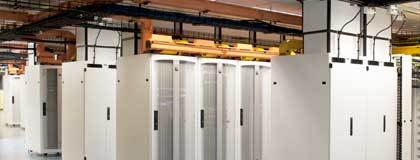
In an effort to make its data center infrastructure benchmarking system completely independent from the Uptime Institute’s Tier Classification System and to avoid confusion, the Telecommunications Industry Association (TIA) will revise its ANSI/TIA-942/TIA942-A standards to remove the word “tier.”
The tier classification schemes provided by both organizations have often caused confusion among data center professionals.
Here’s the story…
Same name, different approaches
The Uptime Institute created its Tier Classification System in the mid-1990s to help data center professionals evaluate their facility’s infrastructure, performance and uptime. It is comprised of a four-tier scale, with Tier IV being the most robust and fault-tolerant.
In contrast with Uptime’s approach, TIA provides specific requirements for each level of redundancy and availability in its TIA-942-2 standard, covering not only the physical construction, but other components of the data center (cabling, electrical power, cooling, maintenance, commissioning, etc.).
In simple terms, while TIA’s scheme usually recommends a certain design solution for each tier and provides a specific checklist of requirements, the Uptime Institute is more concept-based and flexible to various solutions, as long as the end result can provide the desired level of availability and performance.
"Clear ownership of a benchmarking system is key to its utility, consistency, and accountability. By disentangling our respective terminologies, both TIA and Uptime Institute are better able to pursue the independent development of standards and programs as each sees fit. We are confident that this is the lasting and public solution for the issue," Julian Kudritzki, Uptime Institute COO stated.
In the end, both standards lead to an improvement in data center design and construction, which will in turn, positively affect energy use in the facility.
Raissa Carey, eContent Specialist